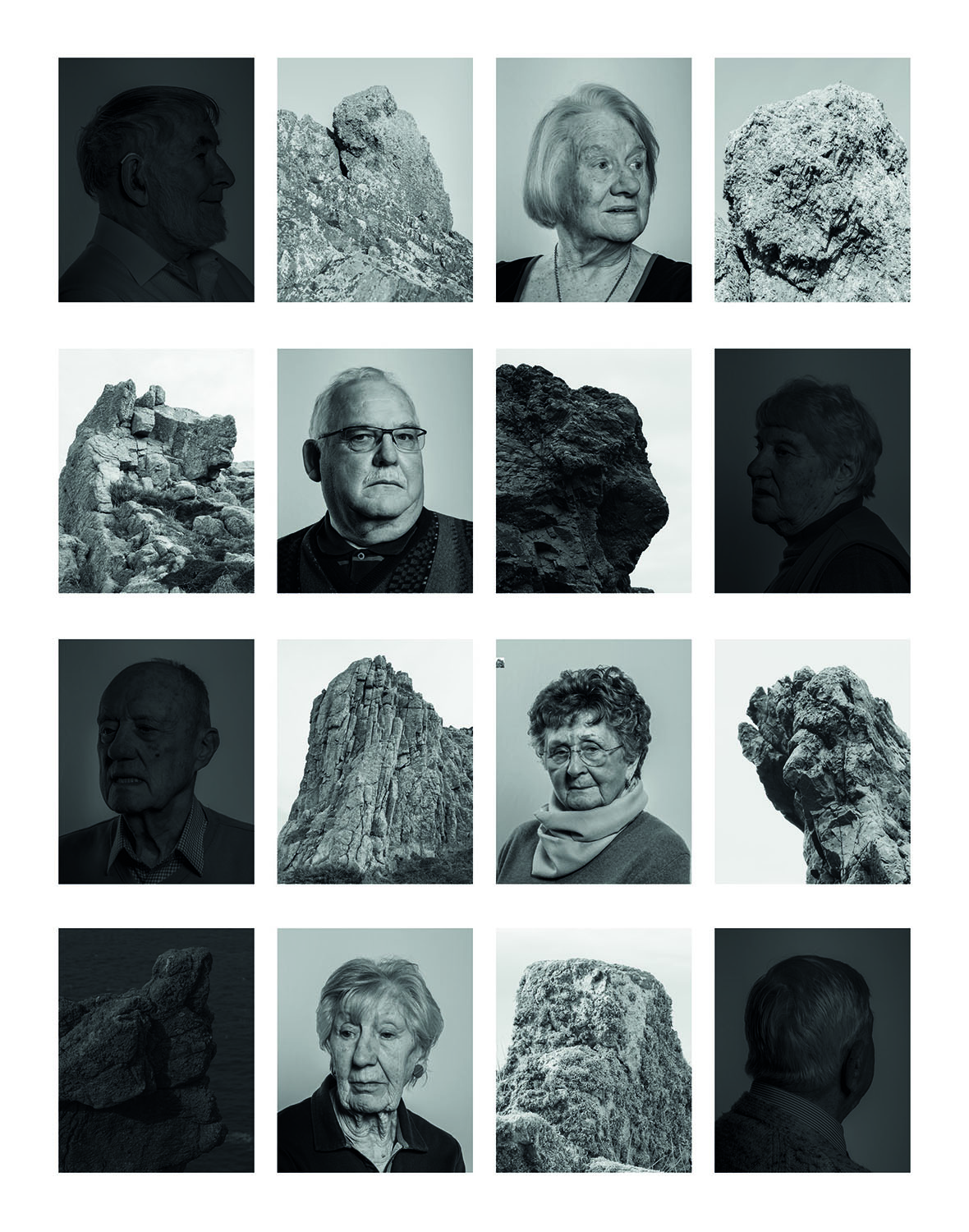Contemporary portrait photographer from the Archisle Contemporary Programme
In the 2001 Jersey survey people were asked questions about their use and understanding of Jèrriais. The islanders were also asked which language they spoke. Out of a total of 87,186 residents of Jersey only 113 people described Jèrriais as their main language.
In 2016 the local photographer Martin Toft made it his mission to capture the island’s last remaining native Jèrriais speakers to hopefully give visibility and recognition to the people of a unique but sadly fading language. The project is called ‘Becque à Barbe’ and was hosted by the Société Jersiaise Photographic archive.
Some portraits have darker tones to reflect the language hidden when English became the formal speech in Jersey. Jèrriais was suppressed publicly and prohibited to be spoken in schools.
Martin Toft has juxtaposed the portraits of speakers of the island’s native tongue with photographs of Jersey rock that are all designated as Sites of Special Interest (SSI). The SSI are important geological outcrops that are protected from development and preserved for the public and research. Toft has juxtaposed the portraits with the rocks because the Jèrriais speakers should also be equally protected from extinction through greater visibility and recognition as people of a unique language.
https://www.bailiwickexpress.com/jsy/news/watch-who-are-113-jerriais-speakers/

Image Analysis
The Becque à Barbe project depicts human faces that are juxtaposed with “portraits” of rock faces. Martin Toft has taken images of rocks that appear similar to the native speakers due to their posture, facial features and overall silhouette. I believe that the concept of juxtaposing a portrait of a native speaker with an image of a rock face is to look at how Jérriais is used, not only to describe characteristics of people but also how it is embedded in Jersey’s native tongue in describing a landscape. Some portraits are darker than others in tone which could reflect how the language was hidden when English became the formal speech in Jersey and Jèrriais was suppressed publicly and prohibited to be spoken in schools. Like Ernest Baudoux’s Victorian portraits, the portraits from the Becque à Barbe project also have a formal style by capturing the subjects with a head shot. These portraits appear to look like Passport Photos which may have been intentional in order to show the importance of the native speakers identity. The idea of using an inanimate object to create a comparison between a subject is a concept I would like to recreate in my own photography work.
